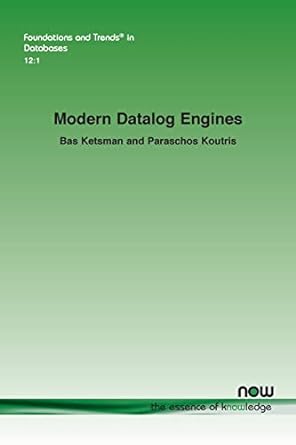Answered step by step
Verified Expert Solution
Question
1 Approved Answer
Q 4 ) Gradient Descent. Please refer to the file assign 2 q 3 . py provided along with this assignment. ( 2 marks )
Q Gradient Descent. Please refer to the file assign qpy
provided along with this assignment. marks
Repeat the exercise in Q for the loss function given below:
L x y cosx cosy
Modify the file assign qpy only inbetween the lines marked with com
ment as described in Q Do not modify any other line of the script.
Deliverables: A A screenshot of the D plot obtained when you execute the
python script after adding your lines of code. B A screenshot of the console
output obtained obtained when you execute the python script after adding
your lines of code. C The equations of the Loss function and gradient of
loss function on which the gradient descent was performed. D A snapshot
of the lines of code that was added by you in the designated places. E State
whether the algorithm converged to the global minima, a local minima or if
it failed to converge in your case marks
Given below are the recommended versions of python
and python packages for Q and Q
Python default Nov ::
GCC on linux
Type "help", "copyright", "credits" or "license" for more information.
import numpy
numpy.version
import matplotlib
matplotlib.version
Below is the code :
import numpy as np
import matplotlib.pyplot as plt
import random
##### To be Updated #####
# egif your BITS email id is ab@wilp.bitspilani.com
# update the below line as studentid xx
studentid
#########################
studentid joini for i in studentid if iisdigit
random.seedstudentid
# set the number of iterations and learning rate
iters random.randint
learningrate
# Evaluate the function at x
def Cx:
##### To be Updated #####
# NOTE: return value of this function will
# ALSO change for Q of the assignment
#########################
return xT@nparray@xnparrayreshapeT@x
# Evaluate the gradient of function at x
def dCx:
##### To be Updated #####
# Compute and return the gradient
return
#########################
def plotgradchangeXYZ c gradxs gradxs gradys:
fig pltfigure
titlestr "Gradient Descent:"lrstrlearningrate
plttitletitlestr
ax fig.addsubplotprojectiond
axplotsurfaceX Y Z cmappltcmYlGnBuralpha
for i in rangelengradxs:
axplotgradxsigradxsi gradysi markerfacecolorr markeredgecolorr markero markersize
axtextgradxsgradxsgradys
strroundgradxs
strroundgradxs
strroundgradys
pltshow
def GDstartxyz c dc iters, eta:
px start.astypefloat
py cpxastypefloat
printGD Start Point:",pxpy
printNum steps:",iters
gradxs gradxs gradys pxpxpy
for iter in rangeiters:
##### To be Updated #####
# Update px using gradient descent
px
# Update py
py
#########################
gradxsappendpx
gradxsappendpx
gradysappendpy
printConverged Point:",pxpy
plotgradchangexyz c gradxsgradxs gradys
lo
hi
x roundrandomuniformlo
x roundrandomuniformlo
x nplinspacelo hi
y nplinspacelo hi
X Y npmeshgridx y
Z npzeroslikeX
for i in rangeXshape:
for j in rangeXshape:
Zij CnparrayXijYijreshape
# start Gradient Descent
GDnparrayxxreshapeXYZ C dC iters, learningrate
Step by Step Solution
There are 3 Steps involved in it
Step: 1

Get Instant Access to Expert-Tailored Solutions
See step-by-step solutions with expert insights and AI powered tools for academic success
Step: 2

Step: 3

Ace Your Homework with AI
Get the answers you need in no time with our AI-driven, step-by-step assistance
Get Started


